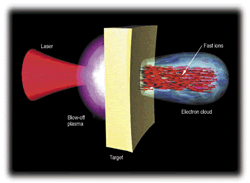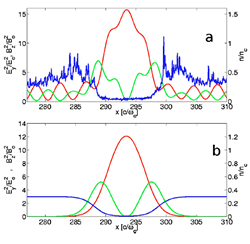|
Plasma - ultraintense laser interaction This activity is focused on the interaction between intense electromagnetic radiation and matter. Properties and features of the interaction strongly depend on the physical properties of the electromagnetic radiation, like its intensity, energy, wavelength etc., and, for application, on the capabilities in producing and controlling such properties. The introduction of the Chirped Pulse Amplification (CPA) technique allowed a dramatic increase of the power of ultrashort laser pulses, achieving the Petawatt (10 15 W) level, and of the related pulse intensity, up to 10 20 -10 21 W/cm 2 . New regimes of electromagnetic radiation-matter interaction, interesting both at the fundamental level and in the light of possible applications, can be investigated using these pulses. Non-linear and relativistic effects play a crucial role in establishing the main features of the physical system. These processes can lead to the production of x ray sources, the generation of ultraintense electric and magnetic fields, energetic electron, ion, and neutron populations, and laser-induced nuclear reactions.In this frame, at Nanolab theoretical research activities are developed in the following areas: - relativistic electromagnetic solitons in plasmas - ultraintense laser-driven ion acceleration Selected publications:
|
Schematic picture of an experiment of ultraintense laser-induced ion acceleration
| |


